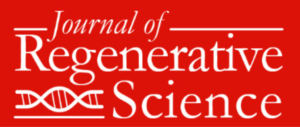Prolactin: A New Actor in Musculoskeletal Physiology and its Implication in Orthopedic Pathologies
Original Article | Vol 5 | Issue 1 | January-June 2025 | page: 14-18 | Paul Germán Terán Vela, Estefanía Anabel Lozada Tobar, Luis Eduardo Guzmán Freire
DOI: https://doi.org/10.13107/jrs.2025.v05.i01.161
Open Access License: CC BY-NC 4.0
Copyright Statement: Copyright © 2025; The Author(s).
Submitted Date: 10 May 2025, Review Date: 20 May 2025, Accepted Date: May 2025 & Published: 30 Jun 2025
Author: Paul Germán Terán Vela [1], Estefanía Anabel Lozada Tobar [1], Luis Eduardo Guzmán Freire [2]
[1] Department of Traumatology and Orthopedics, Orthopedic Specialties Center, Quito- Ecuador,
[2] Orthopedic Specialties Center, Quito-Ecuador.
Address of Correspondence
Dr. Paul Germán Terán Vela,
Department of Traumatology and Orthopedics, Orthopedic Specialties Center, Quito-Ecuador.
E-mail: paulteranmd@gmail.com
Abstract
Prolactin (PRL), traditionally known for its role in lactation, has emerged as a pleiotropic hormone with actions that extend beyond reproduction. Growing evidence suggests its involvement in pain modulation, immune function and tissue homeostasis, with potential repercussions on musculoskeletal health. This review analyzes in depth the available scientific literature on PRL and its relationship with orthopedic pathologies, including chronic pain, tendinopathies, and conditions of the muscle, ligaments, and articular cartilage. The molecular and cellular mechanisms underlying the influence of PRL on musculoskeletal physiology are explored, as well as the clinical implications of its level disturbances, both hyperprolactinemia and hypoprolactinemia. Finally, future perspectives and lines of research are discussed to fully understand the role of PRL in the context of orthopedic pathologies are discussed.
Keywords: Prolactin, Hyperprolactinemia, Hypoprolactinemia, Chronic pain, Tendinopathies, Osteoarthritis, Skeletal muscle, Ligaments, Articular cartilage, Prolactin receptors
References:
1. Noel GL, Suh HK, Stone JG, Frantz AG. Human prolactin and growth hormone release during surgery and other conditions of stress. J Clin Endocrinol Metab 1972;35:840-51.
2. Sassin JF, Frantz AG, Weitzman ED, Kapen S. Human prolactin: 24-Hour pattern with increased release during sleep. Science 1972;177:1205-7.
3. Melmed S, Casanueva FF, Hoffman AR, Kleinberg DL, Montori VM, Schlechte JA, et al. Diagnosis and treatment of hyperprolactinemia: An endocrine society clinical practice guideline. J Clin Endocrinol Metab 2011;96:273-88.
4. Molitch ME. Drugs and prolactin. Pituitary 2008;11:209-18.
5. Bostwick JR, Guthrie SK, Ellingrod VL. Antipsychoticinduced hyperprolactinemia. Pharmacotherapy 2009;29:64-73.
6. Littley MD, Shalet SM, Beardwell CG, Ahmed SR, Applegate G, Sutton ML. Hypopituitarism following external radiotherapy for pituitary tumours in adults. Q J Med 1989;70:145-60.
7. Webster J, Piscitelli G, Polli A, Ferrari CI, Ismail I, Scanlon MF. A comparison of cabergoline and bromocriptine in the treatment of hyperprolactinemic amenorrhea. Cabergoline comparative study group. N Engl J Med 1994;331:904-9.
8. Maciuba S, Bowden GD, Stratton HJ, Wisniewski K, Schteingart CD, Almagro JC, et al. Discovery and characterization of prolactin neutralizing monoclonal antibodies for the treatment of female-prevalent pain disorders. MAbs 2023;15:2254676.
9. Singh S, Kopruszinski CM, Watanabe M, Dodick DW,Navratilova E, Porreca F. Female-selective mechanisms promoting migraine. J Headache Pain 2024;25:63.
10. Clevenger CV, Furth PA, Hankinson SE, Schuler LA. The role of prolactin in mammary carcinoma. Endocr Rev 2003;24:1-27.
11. Ling C, Hellgren G, Gebre-Medhin M, Dillner K, Wennbo H, Carlsson B, et al. Prolactin (PRL) receptor gene expression in mouse adipose tissue: Increases during lactation and in PRLtransgenic mice. Endocrinology 2000;141:3564-72.
12. Guler HP, Zapf J, Froesch R. Short-term metabolic effects of recombinant human insulin-like growth factor I in healthy adults. N Engl J Med 1987;317:137-40.
13. Lubberts E, Joosten LA, Oppers B, Van Den Bersselaar L, Coenen-De Roo CJ, Kolls JK, et al. IL-1-independent role of IL-
17 in synovial inflammation and joint destruction duringcollagen-induced arthritis 1. J Immunol 2001;167:1004-13.
14. Schlechte JA, Shermanf BM, Chapler FK, Van Gilder J. Long term follow-up of women with surgically treated prolactinsecretingpituitary tumors. J Clin Endocrinol Metab1986;62:1296-301.
15. Klibanski A, Zervas NT. Diagnosis and management ofhormone-secreting pituitary adenomas. N Engl J Med 1991;324:822-31.
16. Yun SJ, Sang H, Park SY, Chin SO. Effect ofhyperprolactinemia on bone metabolism: Focusing onosteopenia/osteoporosis. Int J Mol Sci 2024;25:1474.
17. Buvat J, Lemaire A, Buvat-Herbaut M, Fourlinnie JC,Racadot A, Fossati P. Hyperprolactinemia and sexual functionin men. Horm Res 1985;22:196-203.
18. Szewczyk AK, Ulutas S, Aktürk T, Al-Hassany L, Börner C,Cernigliaro F, et al. Prolactin and oxytocin: Potential targets formigraine treatment. J Headache Pain 2023;24:31.

| How to Cite this article: Terán Vela PG, Tobar EAL, Freire LEG | Prolactin: A New Actor in Musculoskeletal Physiology and its Implication in Orthopedic Pathologies| Journal of Regenerative Science | Jan-Jun 2025; 5(1): 14-18. |

Leave a Reply
Want to join the discussion?Feel free to contribute!